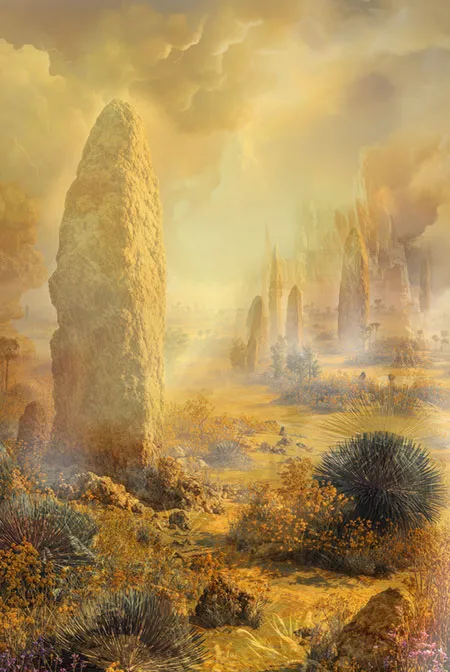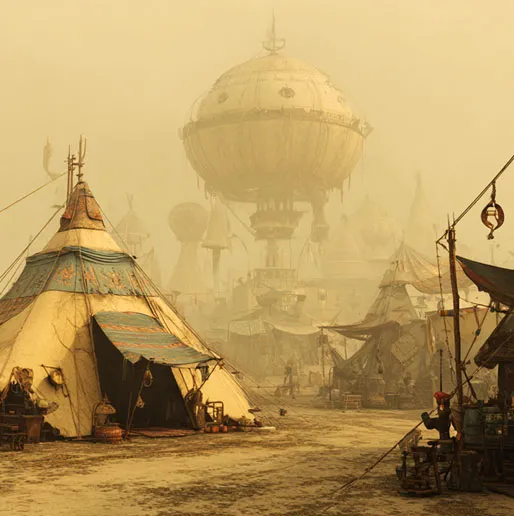Kir-Si-Zesh - Foggy Desert
Iltani stood at the edge of the jagged Dragon Cliffs that separated the mainland from the sea and gazed into the distance. She couldn't see very far, as an impenetrable wall of thick fog swallowed the landscape to the north. But she had a mission to fulfill, and as the divine guardian of the air element, she was the only one of her siblings capable of doing so.- Excerpt from the novel -
Geography
At a Glance
Size: Approx. 493 km²Temperature: 25°C
Humidity: 60 to 80%
Landscape: Karst rock needles of basalt and sandstone formed by wind and water erosion
Flora: Copper sand tulsi, Yellow-stemmed furweed, Swallowwort, White-rooted leatherleaf, Weeping thistle cactus, Rosemary tillandsia, Thin-leaved saw blade
Fauna: Glass-eyed antelope, Dwarf plate rhinoceros, Mist fox, Golden vulture, Emerald lizard, Bladder toad, Horned spider, Armored scorpion, Cactus bees
Ecosystem
"Have you noticed it too?" "What? That it doesn't smell as horrible here as in that strange forest with the golden trees where we were last?" "Yes. It seems the fog here neutralizes the smell of sulfur." "Do you think so, gentlemen? The aura of the ground dwellers tells me it's the plants." - Nektus Phikaryn, geologist with Berrin Oakleaf, field master and Fâlyn Ravalis, botanist in conversation -
Life between the mists
Inhabitants
Natural phenomena
"You don't need to be afraid, little lady. This is just a harmless thunderstorm. It may look dangerous as the clouds roll toward us, but the lightning ignites a refreshing tingle on the skin, and its thunder sounds like singing glasses." -Melem Eshtar, Desert Guide-











A most interesting and dangerous locale, but yet one that invites a curiosity deep within the spirit. Of course to trust blindly those whom would offer to be guides in such a land is foolishness, you know not the culture, or their ways. However to some extent the options are thusly limited. And the explorer in me cannot simply walk away from such an interesting biome. Thus we are at an impasse, and must put our faith in our ability to be insightful of others and to judge their characters in conversation and negotiation. I simply must mark this locale for later and deeper exploration, and most certainly will tuck it into my collection. :)
I'd call it a dilemma rather than a dead end, but it's advisable to trust your instincts and have some defenses with you. Thanks for reading and your comment ;)
Here are my Entries for the water continent Ulűri̋qi̋